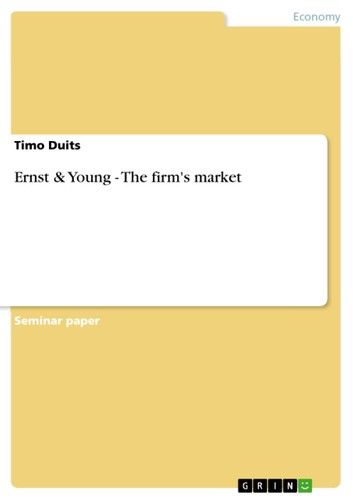Seminar paper from the year 2005 in the subject Business economics - Accounting and Taxes, grade: A, Wayne State University (Department of Economics), 34 entries in the bibliography, language: English, abstract: In 2002, the Sarbanes-Oxley Act (SOX) was passed in response to a number of major corporate and accounting scandals involving prominent companies in the United States like Enron, Arthur Andersen, and WorldCom. These scandals resulted in a loss of public trust in accounting and reporting practices . It is now the goal of the Sarbanes-Oxley law to restore public trust in the corporate world for shareholders and all other stakeholders like banks, employees, tax authorities, etc. In the slipstream of this vast legislation in all these jurisdictions, audit firms are facing certain restrictions. For example, providing legal services to Security and Exchange Commission (SEC)-registered companies and all their subsidiaries and affiliates wherever in the world is now prescribed if you are the auditor of one of those entities. Tax advisory services for SEC audit clients are allowed, provided you follow certain procedures . These regulations and the increased awareness of corporate governance issues have affected the profession of auditors. It has in many cases forced the auditing firm Ernst & Young to redefine its relationship with clients and reestablish its expectations and its deliverables. In most countries you see an increase of demand for audit and tax services. But the market shows some shifting. There is not only a competition amongst the Big Four (Ernst & Young, KPMG, PricewaterhouseCoopers, Deloitte Touche Tohmatsu), but also with a few other companies. The goal of this paper is to define the market of Ernst & Young through describing its relationship to the competitors in terms of restrictions like the SOX and to measure its market structure.












